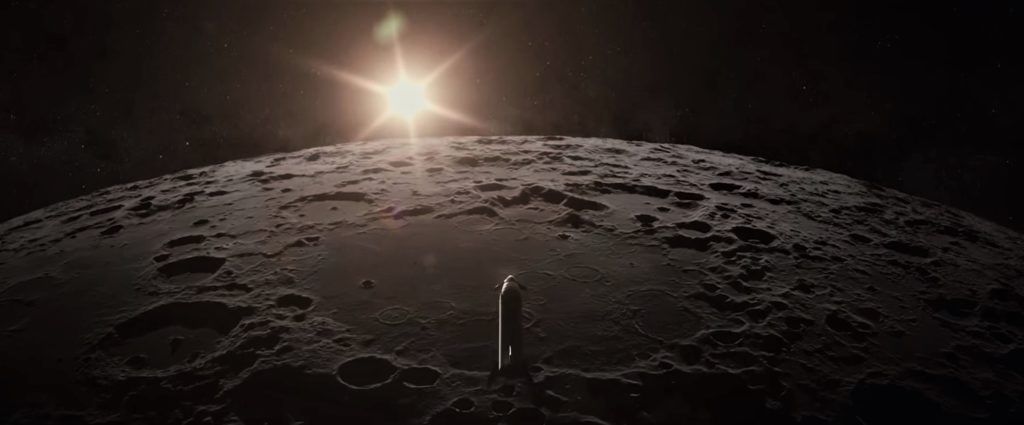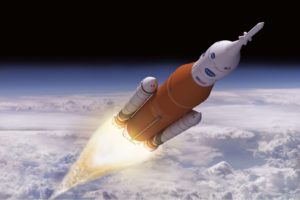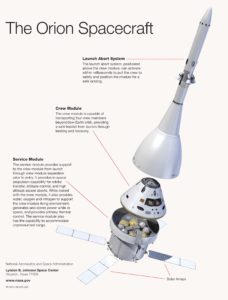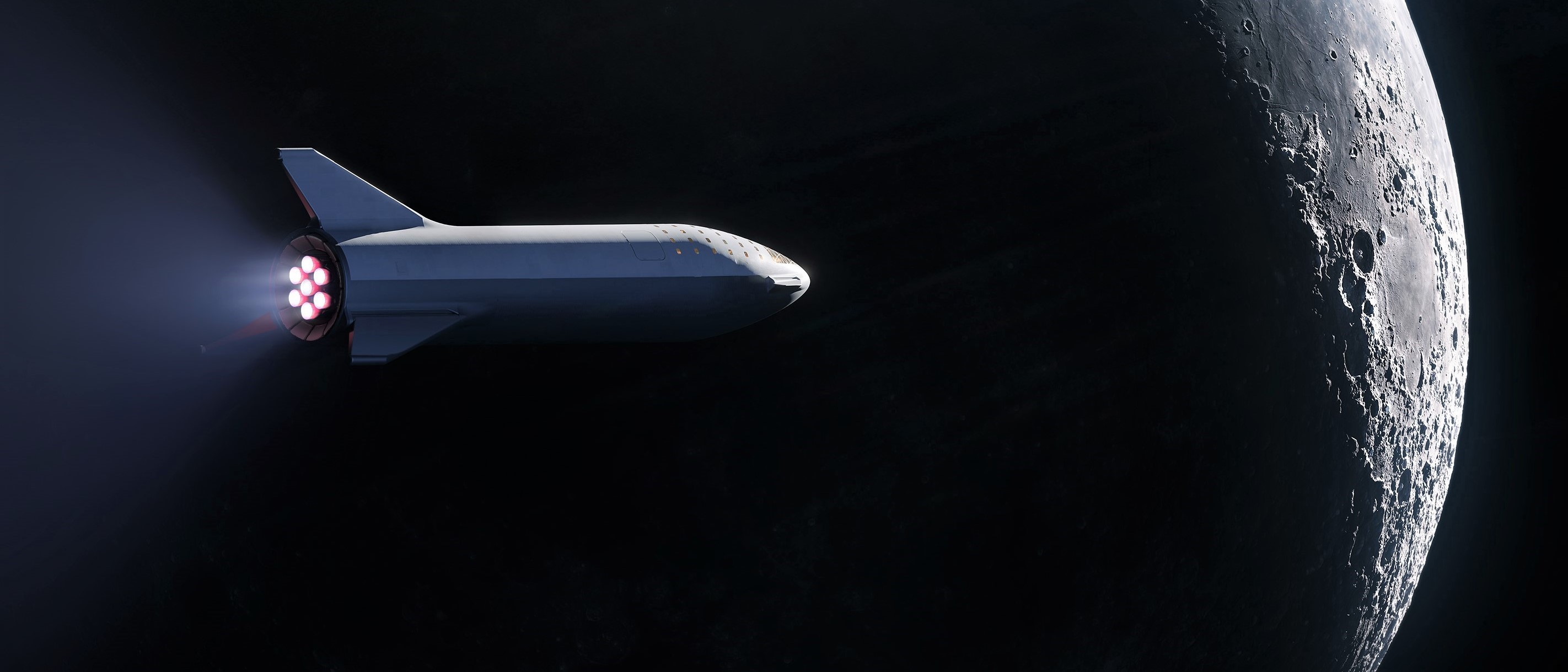

SpaceX
SpaceX to submit Moon lander proposal for latest NASA spaceflight competition
SpaceX reportedly plans to submit its own human-rated Moon lander design for NASA’s latest major request for proposal (RFP), part of the agency’s rough plan to return humans to the Moon no earlier than 2028.
Meant to begin delivering NASA astronauts to the surface of the Moon as early as 2028, the agency hopes to base those lander operations on a thus far unbuilt space station orbiting the Moon with the support of its SLS rocket and Orion spacecraft.
This is actually a pretty big deal. https://t.co/P6LXAMXVJI
— Eric Berger (@SciGuySpace) February 11, 2019
SpaceX will submit a lunar lander design.
— Eric Berger (@SciGuySpace) February 11, 2019
Meant to build directly off of SLS/Orion, a NASA-designed rocket and spacecraft beset with at least three years of delays and billions of dollars in cost overruns, it’s unclear where SpaceX might fit into NASA’s latest modernized attempt at an Apollo Program 2.0. Alongside the 2017 cancellation of Crew Dragon’s propulsive landing program due in part to the likely cost of the certification burden NASA would have placed on the technology before allowing it to land astronauts, SpaceX also canceled Red Dragon (and thus Grey Dragon), a proposal to use a minimally modified version of Crew Dragon as an ad-hoc Mars lander and R&D testbed.
Aside from the likely cost of certifying propulsive Crew Dragon to NASA specifications, CEO Elon Musk also explained the program’s cancellation as a consequence of SpaceX’s far greater interest in what he described as “vastly bigger ship[s]” in July 2017. This translated into a presentation at IAC 2017 a few months later, where Musk revealed SpaceX’s updated design for a giant, fully-reusable launch vehicle meant to enable sustainable Mars colonization, known then as BFR. BFR has since been reconceptualized at least two more times, settling (at present) on a radical new approach said to rely heavily on stainless steel as a replacement for advanced carbon composites.
Initially making one 200 metric ton thrust engine common across ship & booster to reach the moon as fast as possible. Next versions will split to vacuum-optimized (380+ sec Isp) & sea-level thrust optimized (~250 ton).
— Elon Musk (@elonmusk) February 1, 2019
In the second half of 2018 and the first few months of 2019, the SpaceX CEO’s BFR (now Starship/Super Heavy) narrative has noticeably diverged from a largely exclusive focus on Mars to include a new interest (be it genuine or out of convenience) in the Moon. Most notably, Musk stated in January and February 2019 that SpaceX’s single-minded goal for BFR was now “to reach the moon as fast as possible”. In response to a question about SpaceX’s intentions for the first few orbital BFR (Starship) launches, Musk also replied, “Moon first, Mars as soon as the planets align”.
This is likely explicitly connected to Japanese billionaire Yusaku Maezawa’s decision to purchase the first operational Starship (BFR) launch in support of his philanthropic #DearMoon project, meant to send 8-10 artists from across Earth on the first commercial voyage around the Moon as early as 2023. While no specific value was given, the implication of CEO Elon Musk’s emotional response when discussing the financial support pegged the number in the hundreds of millions of dollars, likely on the order of $250M to $500M. However, any astute bureaucrat or aerospace executive would also be (and have been) distinctly aware of a new political undercurrent pushing for the US and NASA to return humans to the Moon, circulating for the last few years before breaking through to the surface in the last six or so months.
- SpaceX’s updated BFR spaceship seen cresting over the Moon’s limb. (SpaceX)
- SpaceX’s 2017 BFS (now Starship) delivers cargo to a large lunar base. (SpaceX)
Orion/SLS versus Starship/Super Heavy?
Per Musk’s frequent and insistent comments on just how hard he expects it to be for SpaceX to fully fund the development of BFR, it would come as no surprise to learn that SpaceX had set its eyes on potential sources of major BFR development funds. Where exactly NASA will find the multibillion-dollar sum likely required to develop even a commercial human-rated Moon lander is entirely unclear, but alas. Although NASA’s new Moon mission seems like an apt fit for SpaceX, funding aside, the problem remains that SpaceX’s next-generation Starship/Super Heavy (formerly BFR) launch vehicle poses a direct, existential threat to NASA’s SLS rocket and Orion spacecraft, an almost entirely expendable system likely to cost no less than $1B per launch and unlikely to launch for the first time until 2021.
NASA’s human return to the Moon is meant to directly complement SLS/Orion thanks to the intention of using a theoretical Moon-based space station (known as Gateway) in a bizarre lunar orbit (known as a “Near Rectilinear Halo Orbit” or NRHO) as the base of lunar-landing operations. The decision to place said Gateway in a lunar halo orbit derives almost exclusively derives (PDF) from a separate decision to design NASA’s future exploration plans around SLS and Orion, particularly Orion in the context of the Moon. Put simply, Orion is relatively mass-inefficient and has a fairly limited amount of delta V (shorthand for the capacity to change one’s velocity), preventing far more useful orbits (i.e. actual lunar orbits). The fragile web of Gateway, SLS, Orion, and any potential crewed Moon landers is intentionally designed to be interdependent, meaning that each piece on its own makes little objective sense and has no obvious functional benefit relative to a bevy of alternatives.
- SLS Block 1. (NASA)
- NASA’s proposed Moon-based space station, known as Gateway. (NASA)
- BFR’s spaceship and booster (now Starship and Super Heavy) separate in a mid-2018 render of the vehicle. (SpaceX)
- A BFS attempts a Mars landing in this official updated render. (SpaceX)
As designed, SpaceX’s Starship/Super Heavy combo would be a nearly redundant and radically simpler solution to the mishmash of Gateway, SLS, Orion, and others. A return to using propulsive Crew Dragon landings as a method of significant payload delivery to the lunar surface is immensely unlikely. The value of an entirely new SpaceX-built craft is equally unclear, given Musk and SpaceX’s general stance on putting development funds towards things that bring the company closer to achieving its ultimate goal of sustainable interplanetary colonization. Regardless, it will undoubtedly be exciting to see what happens and whether SpaceX actually chooses to submit a proposal for one or all aspects of NASA’s baselined lunar lander.
Check out Teslarati’s newsletters for prompt updates, on-the-ground perspectives, and unique glimpses of SpaceX’s rocket launch and recovery processes!
News
SpaceX launches Ax-4 mission to the ISS with international crew
The SpaceX Falcon 9 launched Axiom’s Ax-4 mission to ISS. Ax-4 crew will conduct 60+ science experiments during a 14-day stay on the ISS.
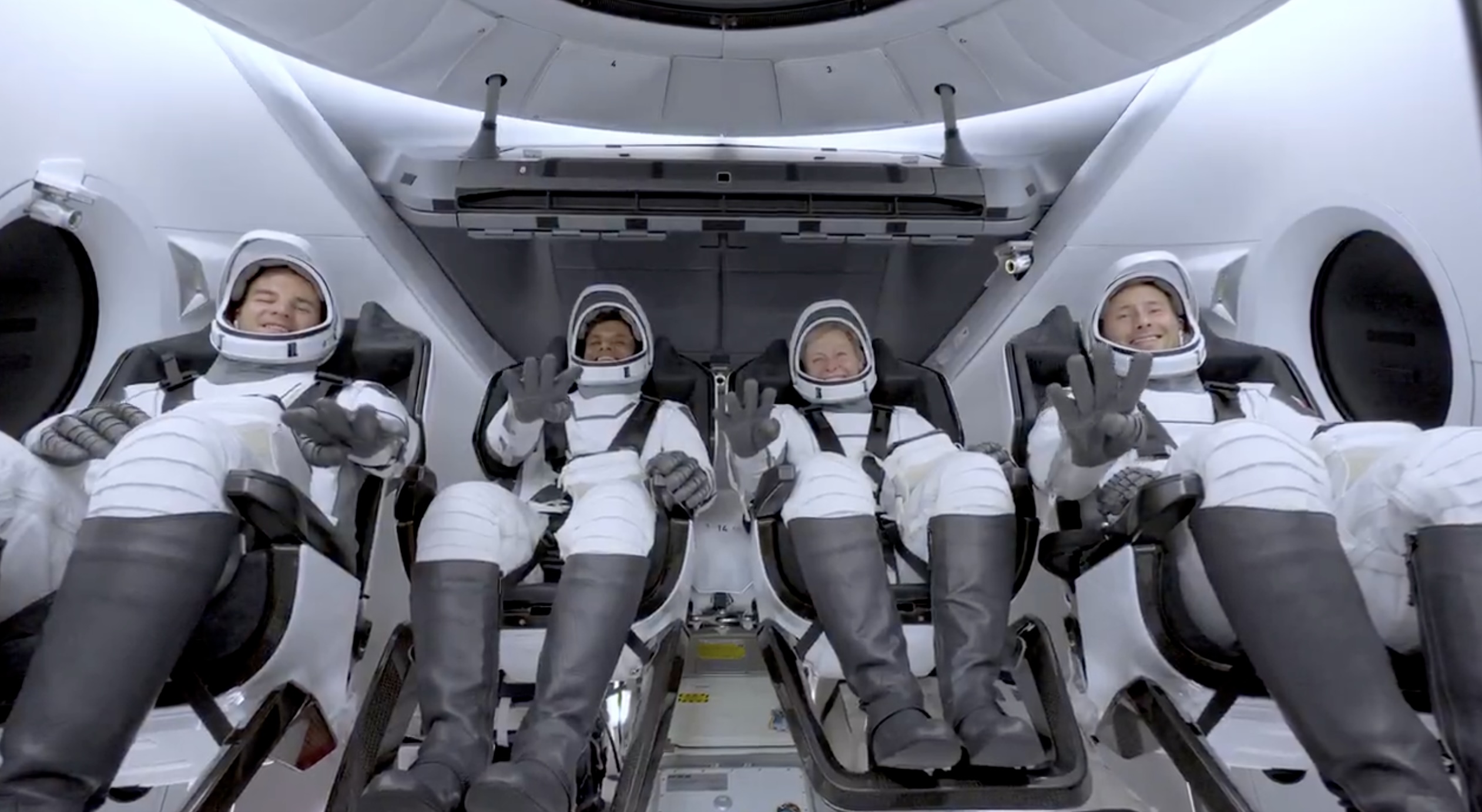
SpaceX launched the Falcon 9 rocket kickstarting Axiom Space’s Ax-4 mission to the International Space Station (ISS). Axiom’s Ax-4 mission is led by a historic international crew and lifted off from Kennedy Space Center’s Launch Complex 39A at 2:31 a.m. ET on June 25, 2025.
The Ax-4 crew is set to dock with the ISS around 7 a.m. ET on Thursday, June 26, 2025. Axiom Space, a Houston-based commercial space company, coordinated the mission with SpaceX for transportation and NASA for ISS access, with support from the European Space Agency and the astronauts’ governments.
The Ax-4 mission marks a milestone in global space collaboration. The Ax-4 crew, commanded by U.S. astronaut Peggy Whitson, includes Shubhanshu Shukla from India as the pilot, alongside mission specialists Sławosz Uznański-Wiśniewski from Poland and Tibor Kapu from Hungary.
“The trip marks the return to human spaceflight for those countries — their first government-sponsored flights in more than 40 years,” Axiom noted.
Shukla’s participation aligns with India’s Gaganyaan program planned for 2027. He is the first Indian astronaut to visit the ISS since Rakesh Sharma in 1984.
Axiom’s Ax-4 mission marks SpaceX’s 18th human spaceflight. The mission employs a Crew Dragon capsule atop a Falcon 9 rocket, designed with a launch escape system and “two-fault tolerant” for enhanced safety. The Axiom mission faced a few delays due to weather, a Falcon 9 leak, and an ISS Zvezda module leak investigation by NASA and Roscosmos before the recent successful launch.
As the crew prepares to execute its scientific objectives, SpaceX’s Ax-4 mission paves the way for a new era of inclusive space research, inspiring future generations and solidifying collaborative ties in the cosmos. During the Ax-4 crew’s 14-day stay in the ISS, the astronauts will conduct nearly 60 experiments.
“We’ll be conducting research that spans biology, material, and physical sciences as well as technology demonstrations,” said Whitson. “We’ll also be engaging with students around the world, sharing our experience and inspiring the next generation of explorers.”
SpaceX’s Ax-4 mission highlights Axiom’s role in advancing commercial spaceflight and fostering international partnerships. The mission strengthens global space exploration efforts by enabling historic spaceflight returns for India, Poland, and Hungary.
News
Starlink Cellular’s T-Mobile service to grow with third-party app data
From Oct 2025, T-Satellite will enable third-party apps in dead zones! WhatsApp, X, AccuWeather + more coming soon.

Starlink Cellular’s T-Mobile service will expand with third-party app data support starting in October, enhancing connectivity in cellular dead zones.
T-Mobile’s T-Satellite, supported by Starlink, launches officially on July 23. Following its launch, T-Mobile’s Starlink Cellular service will enable data access for third-party apps like WhatsApp, X, Google, Apple, AccuWeather, and AllTrails on October 1, 2025.
T-Mobile’s Starlink Cellular is currently in free beta. T-Satellite will add MMS support for Android phones on July 23, with iPhone support to follow. MMS support allows users to send images and audio clips alongside texts. By October, T-Mobile will extend emergency texting to all mobile users with compatible phones, beyond just T-Mobile customers, building on its existing 911 texting capability. The carrier also provides developer tools to help app makers integrate their software with T-Satellite’s data service, with plans to grow the supported app list.
T-Mobile announced these updates during an event celebrating an Ookla award naming it the best U.S. phone network, a remarkable turnaround from its last-place ranking a decade ago.
“We not only dream about going from worst to best, we actually do it. We’re a good two years ahead of Verizon and AT&T, and I believe that lead is going to grow,” said T-Mobile’s Chief Operating Officer Srini Gopalan.
T-Mobile unveiled two promotions for its Starlink Cellular services to attract new subscribers. A free DoorDash DashPass membership, valued at $10/month, will be included with popular plans like Experience Beyond and Experience More, offering reduced delivery and service fees. Meanwhile, the Easy Upgrade promotion targets Verizon customers by paying off their phone balances and providing flagship devices like the iPhone 16, Galaxy S25, or Pixel 9.
T-Mobile’s collaboration with SpaceX’s Starlink Cellular leverages orbiting satellites to deliver connectivity where traditional networks fail, particularly in remote areas. Supporting third-party apps underscores T-Mobile’s commitment to enhancing user experiences through innovative partnerships. As T-Satellite’s capabilities grow, including broader app integration and emergency access, T-Mobile is poised to strengthen its lead in the U.S. wireless market.
By combining Starlink’s satellite technology with strategic promotions, T-Mobile is redefining mobile connectivity. The upcoming third-party app data support and official T-Satellite launch mark a significant step toward seamless communication, positioning T-Mobile as a trailblazer in next-generation wireless services.
News
Starlink expansion into Vietnam targets the healthcare sector
Starlink aims to deliver reliable internet to Vietnam’s remote clinics, enabling telehealth and data sharing.

SpaceX’s Starlink expansion into Vietnam targets its healthcare sector. Through Starlink, SpaceX seeks to drive digital transformation in Vietnam.
On June 18, a SpaceX delegation met with Vietnam’s Ministry of Health (MoH) in Hanoi. SpaceX’s delegation was led by Andrew Matlock, Director of Enterprise Sales, and the discussions focused on enhancing connectivity for hospitals and clinics in Vietnam’s remote areas.
Deputy Minister of Health (MoH) Tran Van Thuan emphasized collaboration between SpaceX and Vietnam. Tran stated: “SpaceX should cooperate with the MoH to ensure all hospitals and clinics in remote areas are connected to the StarLink satellite system and share information, plans, and the issues discussed by members of the MoH. The ministry is also ready to provide information and send staff to work with the corporation.”
The MoH assigned its Department of Science, Technology, and Training to work with SpaceX. Starlink Vietnam will also receive support from Vietnam’s Department of International Cooperation. Starlink Vietnam’s agenda includes improving internet connectivity for remote healthcare facilities, developing digital infrastructure for health examinations and remote consultations, and enhancing operational systems.
Vietnam’s health sector is prioritizing IT and digital transformation, focusing on electronic health records, data centers, and remote medical services. However, challenges persist in deploying IT solutions in remote regions, prompting Vietnam to seek partnerships like SpaceX’s.
SpaceX’s Starlink has a proven track record in healthcare. In Rwanda, its services supported 40 health centers, earning praise for improving operations. Similarly, Starlink enabled remote consultations at the UAE’s Emirati field hospital in Gaza, streamlining communication for complex medical cases. These successes highlight Starlink’s potential to transform Vietnam’s healthcare landscape.
On May 20, SpaceX met with Vietnam’s Ministry of Industry and Trade, announcing a $1.5 billion investment to provide broadband internet, particularly in remote, border, and island areas. The first phase includes building 10-15 ground stations across the country. This infrastructure will support Starlink’s healthcare initiatives by ensuring reliable connectivity.
Starlink’s expansion in Vietnam aligns with the country’s push for digital transformation, as outlined by the MoH. By leveraging its satellite internet expertise, SpaceX aims to bridge connectivity gaps, enabling advanced healthcare services in underserved regions. This collaboration could redefine Vietnam’s healthcare infrastructure, positioning Starlink as a key player in the nation’s digital future.
-

 Elon Musk1 week ago
Elon Musk1 week agoTesla investors will be shocked by Jim Cramer’s latest assessment
-

 Elon Musk20 hours ago
Elon Musk20 hours agoxAI launches Grok 4 with new $300/month SuperGrok Heavy subscription
-

 Elon Musk3 days ago
Elon Musk3 days agoElon Musk confirms Grok 4 launch on July 9 with livestream event
-

 News7 days ago
News7 days agoTesla Model 3 ranks as the safest new car in Europe for 2025, per Euro NCAP tests
-

 Elon Musk2 weeks ago
Elon Musk2 weeks agoA Tesla just delivered itself to a customer autonomously, Elon Musk confirms
-

 Elon Musk1 week ago
Elon Musk1 week agoxAI’s Memphis data center receives air permit despite community criticism
-

 Elon Musk2 weeks ago
Elon Musk2 weeks agoTesla’s Omead Afshar, known as Elon Musk’s right-hand man, leaves company: reports
-

 News2 weeks ago
News2 weeks agoXiaomi CEO congratulates Tesla on first FSD delivery: “We have to continue learning!”

